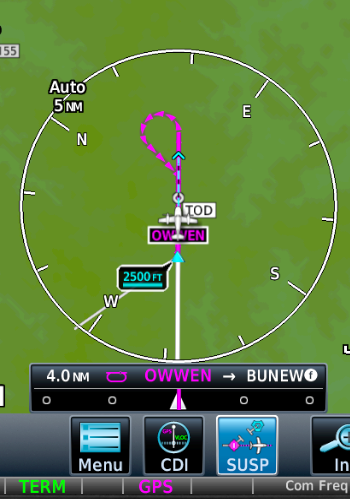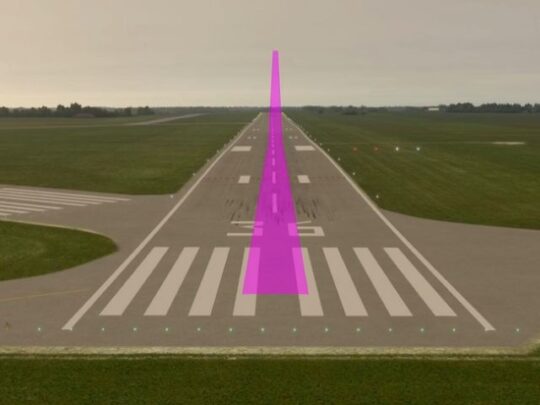Subscriber question:
"Why do I need to suspend my GPS?" — Justin M.
Doug:
 “Once a GPS reaches a fix or waypoint, it sequences to the next one in the flight plan until it runs out of waypoints (or we run out of gas).
“Once a GPS reaches a fix or waypoint, it sequences to the next one in the flight plan until it runs out of waypoints (or we run out of gas).
But when ATC issues a hold they want us flying a racetrack at the assigned holding fix. So, we have to suspend sequencing so that the GPS does not sequence to the next fix in the flight plan after the assigned holding waypoint. Some GPSs let you create an actual hold in the flight plan. Others just let you use the waypoint like you use a VOR: as a fix you can navigate to or from, again and again, as you hold.
Another potential place you’d suspend sequencing is a hold-in-lieu-of-procedure-turn (HILPT)—if ATC has issued holding instructions at the HILPT with an EFC time. If you didn’t manually suspend sequencing, the GPS would sequence to the next fix on the approach as soon as you crossed the holding fix inbound, and you’d lose your ability to have the GPS guide you in the hold. On a related note, if the approach is a localizer approach the suspension should be done prior to turning inbound, before the GPS automatically switches from GPS mode to VLOC mode. Once you’re cleared for the approach, you can unsuspend the GPS at any point in the hold and it should sequence to the next fix in the approach the next time you cross the holding fix inbound.
One place you won’t need to suspend the GPS is when the airplane enters the hold at the missed approach holding waypoint after an instrument approach. This time the GPS will suspend automatically. It will remain suspended until you enter another fix into the flight plan, after the hold, and unsuspend the GPS.”
When was the last time you were assigned a hold by ATC that wasn't part of a training flight?

